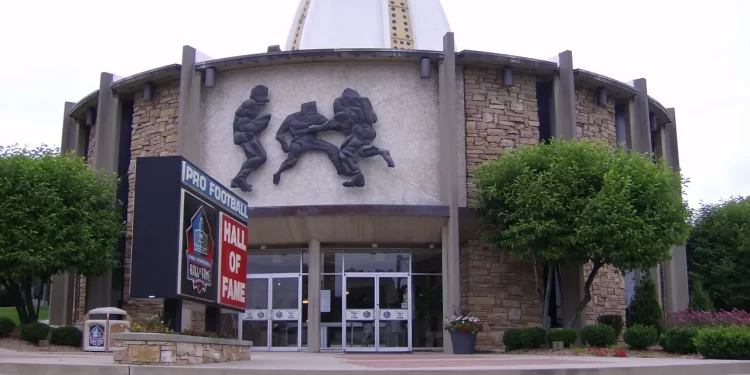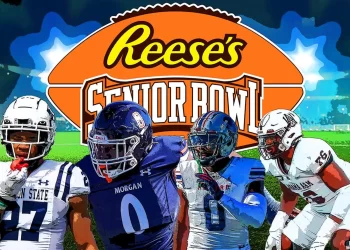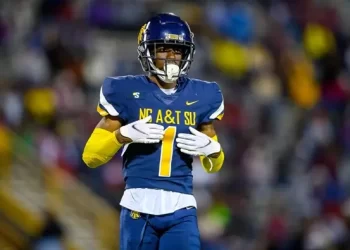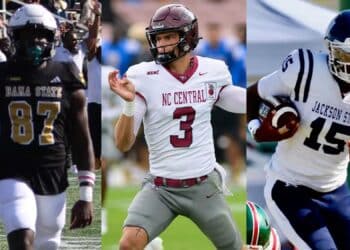By Bill Carroll
At the most recent Pro Football Hall of Fame induction ceremony that took place in Canton, Ohio, following other enshrined players from Historically Black Colleges and Universities, Harold Carmichael, Donnie Shell, Winston Hill, and most recently, Ken Riley were added to the 371 members of the Hall of Fame. Now 35 members of the Pro Football Hall of Fame are HBCU players, that’s almost 10% of the recipients of gold jackets.
Despite all the success that HBCU players have had, there are still several that have been overlooked. I will be reviewing a few of the players that have been thus far excluded.
10. Otis Taylor Jr. WR, [Prairie View A&M] Kansas City, Just made this list over Everson Walls. Walls was great, a four-time Pro Bowl selection, once an All-Pro player, and as a rookie had 11 interceptions in 1981, even though he only started 12 games!
But I am instead focusing on Otis Taylor. Taylor was a 15th-round draft pick of the NFL Philadelphia Eagles in 1965. However, the Chiefs selected him in the fourth round of the AFL Draft, and the 6’3″ 215 speedster soon made his presence felt.
Taylor was a three-time Pro Bowl selection, twice an All-Pro player, and was the UPI, 1971 AFC MVP. In that season he averaged 19.5 yards per reception on 57 catches for 1,110 yards with seven receiving TDs and one score as a rusher.
Amazingly that wasn’t even the finest season he posted. In 1966 Otis Taylor may have been the best receiver in football. He was second in receiving yards with 1,297 on just 58 catches, a 22.4 yards per reception average! He was voted First-team All-AFL and was a member of the 1966 AFL All-Star team. Taylor led the AFL in receiving touchdowns in 1967 with 11.
I believe the primary reasons that Otis Taylor has not gained entry into via the Pro Football Hall of Fame, are the large variance between his best seasons, average, and worst seasons. Other than his 1,000-yard seasons, he had 958 yards receiving in 1967 and 821 yards receiving, in 1972. Those are the only seasons in which he topped 700 yards. He finished with 7306 yards receiving, 57 touchdowns, 410 catches, and an average of 17.8 yards per reception.
When compared to his wide receiver contemporaries who are in the Hall-of-Fame, Taylor is at a slight disadvantage. Here is the tale of the statistics.
Lance Alworth had 542 catches, 10266 yards receiving, 85 touchdowns, 542 catches, and an average of 18.9 yards per reception, fellow HBCU product, Bob Hayes, had 7414 yards receiving, 71 touchdowns, 371 catches and an average of 20 yards per reception, and Don Maynard 11834 yards receiving, 88 touchdowns, 633 catches and an average of 18.7 yards per reception, Taylor comes up just a little short. He likely needed one more great season.
9. Jimmy Lee Smith Jr. [Jackson State] Wide Receiver was a second-round draft pick, 36th overall, of the Dallas Cowboys who went on to five Pro Bowls, a Super Bowl, and 12,287 yards, on 862 catches and 67 touchdowns. He appeared in seven games, due to a broken right fibula, as a rookie, later he had a bout of appendicitis, which was initially misdiagnosed, resulting in an emergency appendectomy and ileostomy, before being waived. He later won his salary grievance against the Cowboys. He was briefly an Eagle but was released in 1994.

His NFL career began in earnest in 1995 when he tried out for an expansion team, the Jacksonville Jaguars. Initially, Smith was a reserve and special teams’ contributor. The next season he moved up the depth chart, when Andre Rison was released after game eleven in 1996, Smith was named a starter. Soon he and Keenan McCardell formed one of the top tandems of the era.
Smith had a game for the ages versus a great Ravens’ defense, in 2000, when he had five receptions, 291 receiving yards (5th in NFL history), and three touchdowns. In 2011, he was named to the Jackson State University All-Century team. In 2016, he was inducted into the Pride of the Jaguars (the franchise’s ring of honor).
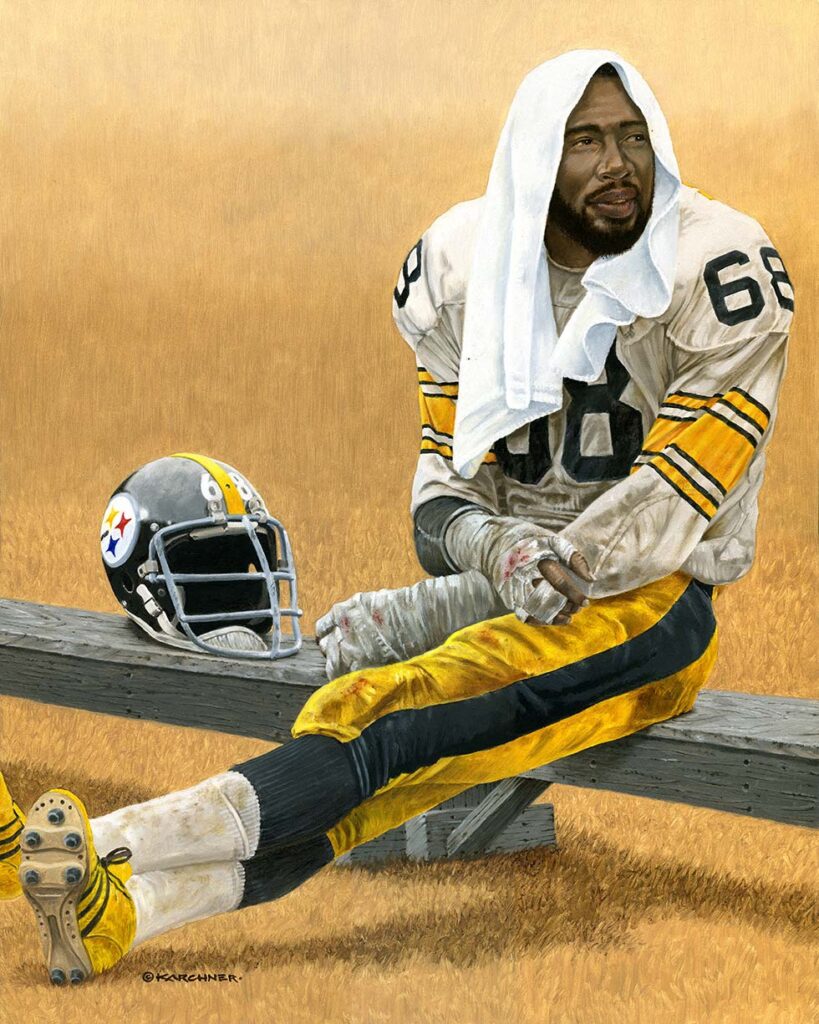
8. L.C. Greenwood [Arkansas-Pine Bluff/Formerly Arkansas AM&N], Defensive End who was an integral part of the ‘Steel Curtain’. He was a four-time Super Bowl champion, and six-time Pro Bowler; who played in 170 games, was named to NFL All-Pro teams in 1974 and 1975, and was All-AFC five times. He also led the Steelers six times in sacks with a career total of 73 ½ sacks [unofficial].
He showed up in the biggest of games: he had four sacks in Super Bowl X [the “unofficial” Super Bowl record], for a total loss of 29 yards and five career Super Bowl sacks. In Super Bowl IX he batted down three passes; and in Super Bowl X he sacked Roger Staubach three times. In his career, he had 14 fumble recoveries, including five in 1971, which tied for the NFL lead.
L.C. Greenwood was an inaugural member of the Steelers Hall of Honor as a member of the Class of 2017. He was named to Super Bowl’s Silver Anniversary team, in 1991. Greenwood was known for his signature gold high-tops, Greenwood was an Ebony All-American, six-time Pro Bowler, two-time All-Pro, and a member of the 1970s NFL All-Decade Team.
Greenwood was another one of Bill Nunn’s finds as a 10th-round draft pick. If you are trying to imagine the type of player he was, he was very similar in physique and playing style to Charles Haley. Shockingly Joe Greene is still the only member of the “Steel Curtain” to be enshrined in the Hall.
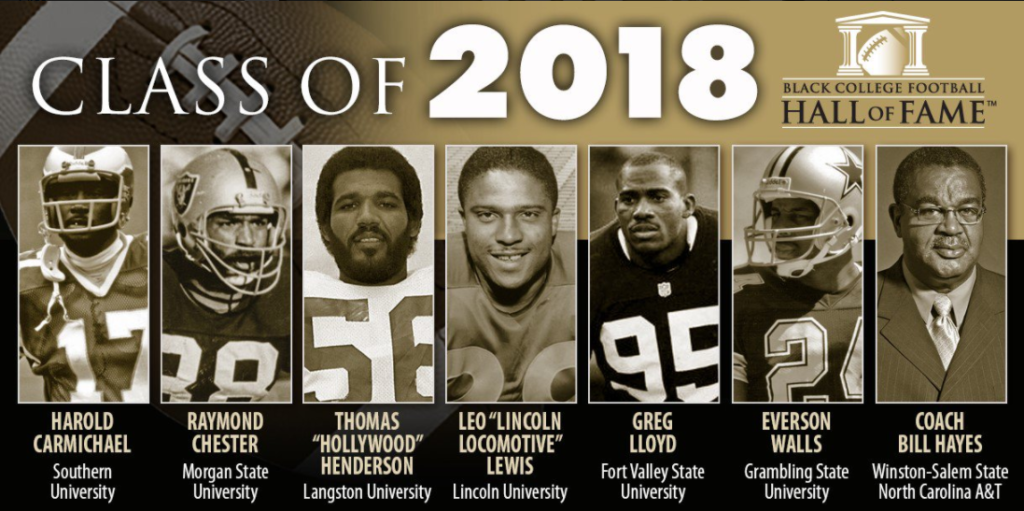
7. Greg Lloyd [Fort Valley State University] Linebacker, he was one of the linchpins of the “Blitzburgh” defense. While at Fort Valley State he was a Three-time All-SIAC selection and in his senior season, was selected as the SIAC Player of the Year. He was also First Team SBN All-American and was selected 150th overall, by the Pittsburgh Steelers in the 6th Round of the 1988 NFL Draft. Considered a bit undersized when he arrived he quickly proved that as a 6th pick was a steal for the Steelers, he was in the same breath as John Stallworth.
Lloyd went on to be a First Team All-Pro Selection three times: (1993, 1994 & 1995) with five Pro Bowl Selections, (1991, 1992, 1993, 1994 & 1995), he also twice led the NFL in Forced Fumbles (1994 & 1995). He tallied 54 ½ sacks and 11 interceptions. Also, he was a two-time Steelers Team MVP and is a member of the Steelers All-Time Team and the Black College Hall of Fame.
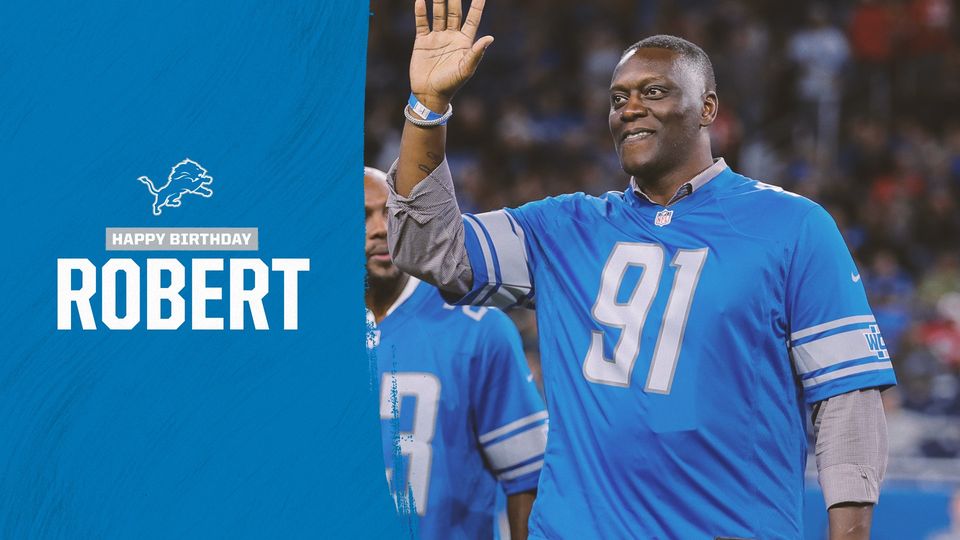
6. Robert Porcher [South Carolina State] He had a quietly impressive 13-year career with 95 ½ sacks, 673 tackles, including 429 solo and 56 for loss, 18 forced fumbles, and seven fumble recoveries, with one scoop and score. He was thrice selected to the Pro Bowl and was named to three Pro Football Weekly All-NFC Teams. In his Lions career, he played in 187 games, at the time of his retirement, that was the third-highest total in Lions history.
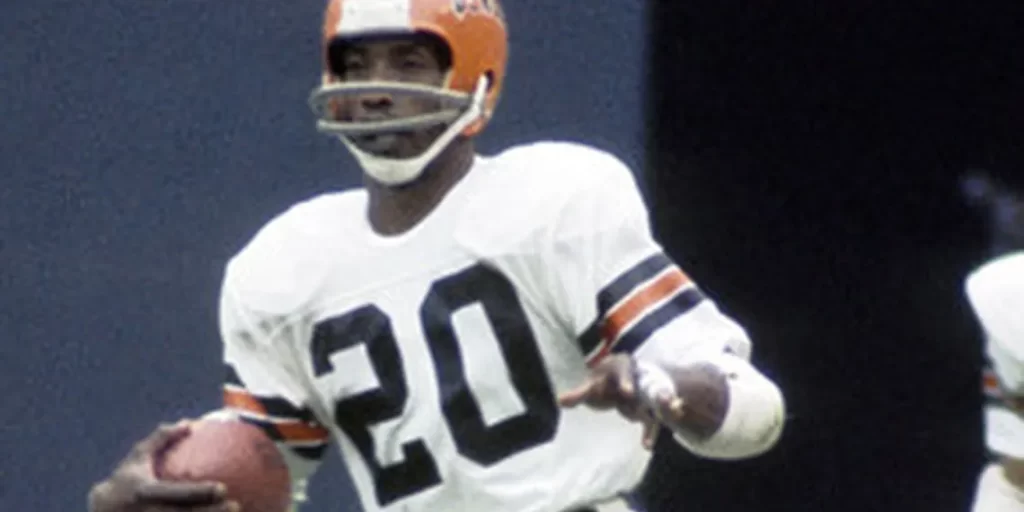 5. Lemar Parrish, [Lincoln (Mo.)] CB 1970-82. The flashier of the Bengals’ stellar corner tandem, an eight-time Pro Bowler and three-time first-team all-pro, “Leapin’ Lemar, had 47 interceptions, returned for 462 yards, and 13 fumble recoveries in 176 games with the Bengals’, Washington and the Bills.
5. Lemar Parrish, [Lincoln (Mo.)] CB 1970-82. The flashier of the Bengals’ stellar corner tandem, an eight-time Pro Bowler and three-time first-team all-pro, “Leapin’ Lemar, had 47 interceptions, returned for 462 yards, and 13 fumble recoveries in 176 games with the Bengals’, Washington and the Bills.
Parrish was a terrific track and field athlete in high school. His speed and quickness helped him to six Pro Bowls in the first eight seasons of the 1970s. He also returned 131 punts for 1,205 yards and 61 kickoffs for 1,504 yards His speed allowed him to total 13 return touchdowns spurred by his 60 total career takeaways.
Parrish took two punts back in 1974 and his18.8 yards per return average, that season, is still the league’s best, post-merger. Parrish is one of six cornerbacks with at least eight Pro Bowls, the only one not in the Hall of Fame. The Bengals were in the NFL’s top ten defensively four of the seven years Riley and Parrish were a tandem, while reaching three postseasons.
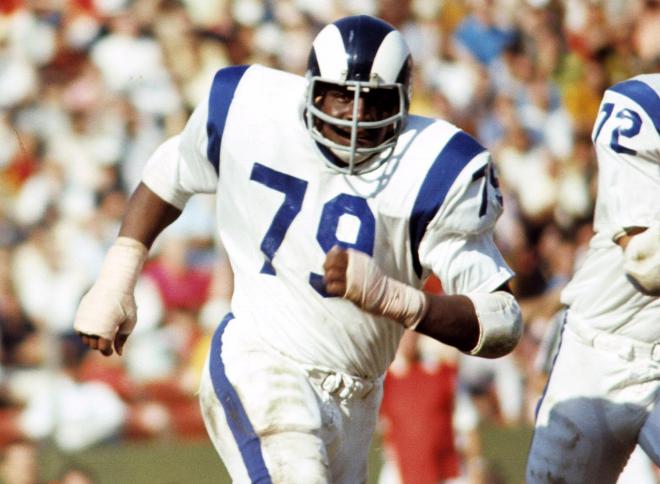
4. Lander McCoy “Coy” Bacon, [Jackson State] DE, Dallas, Los Angeles Rams, San Diego, Cincinnati, Washington, and Washington Federals-Bacon was a pass-rushing menace, born Lander McCoy Bacon and though the “Sack” was not recognized as a statistic until 1982, some scholars believe Bacon may have recorded a season with as many as 26 sacks, although more thorough analysis placed the number at 21½, this was in a 14 game season, that’s nothing of which to be ashamed.
He was selected to three Pro Bowls and was twice selected All-Pro. He was listed at 6’4” but was closer to 6’3” and played most of his career at around 273. Growing up in Ironton, Ohio, he played at Jackson State University, where Bacon was a raw, but talented player.
He left college prior to graduating. The NFL didn’t draft Bacon, instead, he signed with Charleston of the now-defunct, Continental Football League. He was later signed by Dallas as an undrafted free agent, however George Allen, who never met a draft pick he didn’t want to unload, traded a 5th-round pick to add Bacon to the, now aging, “Fearsome Foursome.”
A reserve for most of 1968 he was activated when Lamar Lundy was hurt and the next year when Roger Brown fractured his hand. Bacon then took over the Right Defensive Tackle position, next to Merlin Olsen. Lundy retired in 1969 and Bacon became the starter at DE until he was part of a trade in 1971 that landed the Rams John Hadl.
As a Charger he was reunited with “Deacon” Jones. He went to school once more in the presence of the game’s greatest pass-rusher. In 1976 Bacon was dealt to the Bengals for, HBCU great and future Hall of Fame WR, Charlie Joiner. Bacon proceeded to have a year for the ages, that netted him his second Pro Bowl and first All-Pro selection.
In 1978 he was traded once more, together with CB Lemar Parrish, to bring back a first-round draft pick. He was now with Jack Pardee, an acolyte of George Allen, the NFL coach who had believed in him first. He was credited, [unofficially] with 15 and 11 sack seasons, but he was slowing and when Pardee was replaced by the much more regimented Joe Gibbs, it was clear his days were numbered.
Gibbs released him in 1981 and his playing career ended with the Washington Federals of the USFL, in 1983. After football, he battled personal demons and drug abuse. Later he was the victim of a shooting, following that he cleaned up, became a juvenile corrections officer, and returned to Ironton for the last phase of his life.
Bacon died December 22, 2008, he has been credited, again unofficially, with 130 sacks, in his 14 NFL seasons. Factoring in that he was a reserve for most of the first three years of his career, that he spent time inside at tackle, and that this was during the run, run, and run some more days of the NFL, his consistency and productivity as a pass-rusher is even more compelling. He seems very deserving of serious Pro Football Hall of Fame consideration.
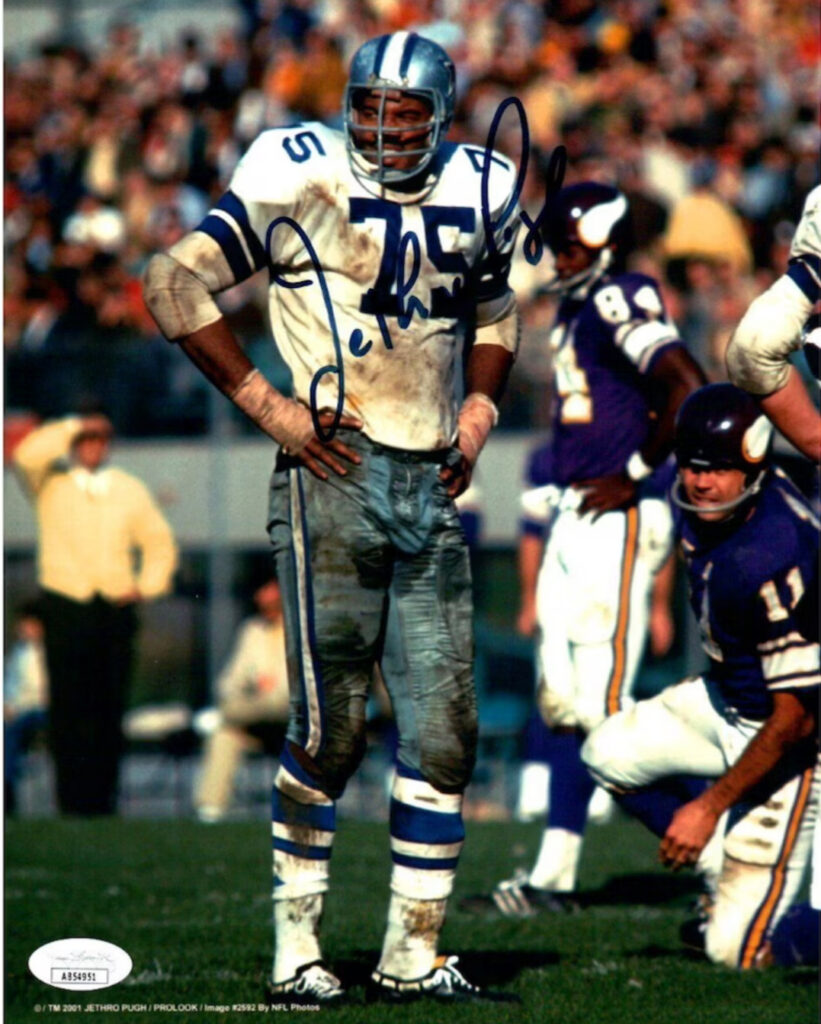
3. Jethro Pugh, DE/DT, [Elizabeth City State] As a valuable and versatile member of the Doomsday Defense” Dallas defensive linemen, Ed “Too Tall” Jones, Harvey “Too Mean” Martin, and ‘The Manster’ Randy White to form a defensive wall that was comparable with, The Vikings’ “Purple People Eaters” and of course the ‘Steel Curtain’ as the top lines of the era. From 1965-78 he played defensive end and tackle in Coach Landry’s ‘Flex’ defense, and averaged 12½ sacks from 1968–1972.
Pugh is unofficially credited with a career total of 95.5. He led the Cowboys in sacks each season from 1968 to 1972, with a high mark of 15.5 in 1968, a team record that stood until 2010 when DeMarcus Ware broke it. Keep in mind that most of Pugh’s damage was done from the interior of the line, he often had to beat multiple blockers. He’s still ranked sixth on the Cowboys all-time sacks list.
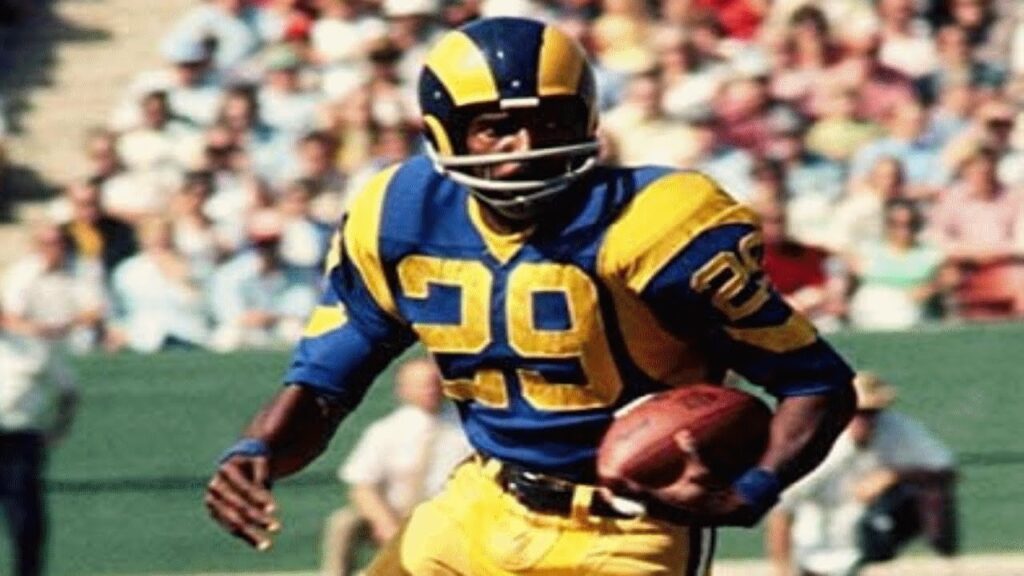 2. Harold Leon “Sunny” Jackson, WR [Jackson State] was inducted into the Black College Hall of Fame. He was SWAC first team (’65, ‘66). He led the SWAC in receiving with 46 catches for 612 yards and 11 touchdowns (’65) Jackson paced the SWAC with 56 catches for 878 yards and 8 touchdowns (’66). He ran track, clocking 9.3 in the 100-yard dash, a school record at the time.
2. Harold Leon “Sunny” Jackson, WR [Jackson State] was inducted into the Black College Hall of Fame. He was SWAC first team (’65, ‘66). He led the SWAC in receiving with 46 catches for 612 yards and 11 touchdowns (’65) Jackson paced the SWAC with 56 catches for 878 yards and 8 touchdowns (’66). He ran track, clocking 9.3 in the 100-yard dash, a school record at the time.
Harold Jackson was drafted by the Los Angeles Rams in the 12th round of the 1968 NFL Draft. He was named to the Sporting News NFC All-Star Team 1972 and played in Pro Bowl in 1969 and 1972. He made the Sporting News NFC All-Star Team in 1973 and 1977, and played in NFC Championship Game 1974, 197 and 1976. Pro Bowl 1973, 1975, and 1977. In his career, he tallied 579 receptions for 10,372 yards, an average of 17.9 yards per catch, and 76 touchdowns.
Perhaps splitting his NFL career between more than one team has slowed his momentum towards the Pro Football Hall of Fame. He has a playing resume that is clearly worthy of the hall.
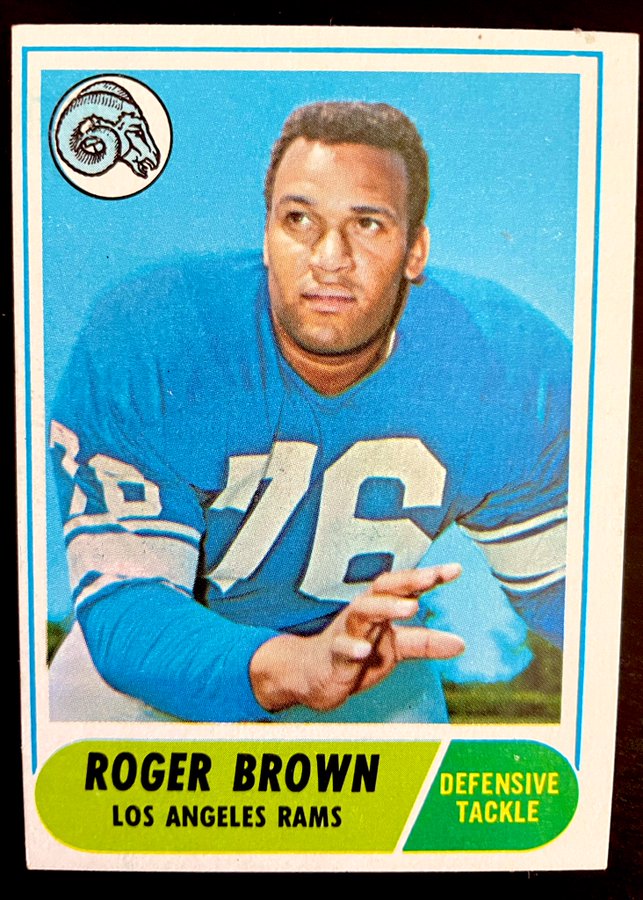
1. Roger Brown [Maryland Eastern Shore/Formerly Maryland State] Defensive Tackle, Detroit and Los Angeles Rams- At 6’5” 305 Brown was the game’s first great player to weigh over 300 pounds. But he was far more than just a giant. He was also astonishingly athletic and agile for his size, he was a truly a revelation. While at Maryland State, [now Maryland Eastern Shore] he was timed at 10 flat in the hundred-yard dash and was timed at 5.4 for the 50-yard distance.
As Detroit’s fourth-round draft pick in 1960, Brown played some amazing games at Memorial Stadium. As a rookie, he stripped the ball from Colts quarterback, Johnny Unitas and recovered the fumble in a 20-15 Lions victory. Two years later, Brown tackled Unitas in the end zone for a safety in a 29-20 win.
In 1966, he blocked a Colts field-goal attempt as Detroit triumphed, 20-14. In Detroit, he teamed with Alex Karras, Sam Williams, and Darris McCord to form the first defensive front that the media dubbed the “Fearsome Foursome.”
Acquired by Los Angeles in 1967, he replaced Rosey Grier who had been forced to retire due to a torn Achilles, on a unit with the same name and played alongside Deacon Jones, Merlin Olsen, and Lamar Lundy, in the second, but much more well known, “Fearsome Foursome.”
Unfortunately, in his era, so few defensive statistics were official, that it’s difficult to get a sense of his dominance. But, in the “Thanksgiving Day Massacre” game, against the Green Bay Packers in 1962, according to newspaper accounts, he sacked Bart Starr either six or seven times, including one for a safety.
He was a Pro Bowl player for six straight seasons (1962–1967) and twice a first-team All-Pro (1962 and 1963). He was a member of both of the great “Fearsome Foursomes” in Detroit and with the Rams in Los Angeles. He has been elected to the National Football Foundation and College Football Hall of Fame; and now has been inducted into the Black College Football Hall of Fame.
The most recent NFL Hall of Fame inductee, from a HBCU was Ken Riley, [Florida A&M] Cornerback: A standout quarterback in both high school and college, he came to the Bengals having never played corner a day in his life, at any level of football.
Despite that, he became a day-one starter and retired with 65 interceptions in 207 games, including eight in his final season, with two TDs. More than 30 years after retiring from the Bengals, Riley still ranks fifth in career interceptions with 65; Riley is one of six greats that were named to the 2015 class of the Black College Football Hall of Fame.
Riley, enshrined in the Black College Football Hall of Fame 28th of February 2015, was joined by: Roger Brown, Richard Dent, L.C. Greenwood, Ernie “Big Cat” Ladd, Donnie Shell, and former Jackson State head coach W.C. Gordon. Riley was a fine quarterback at Florida A&M University. Where he played for the legendary Jake “The Snake” Gaither, with Riley as a starter, the team had a record of 23-7 and he helped lead his team to Southern Intercollegiate Athletic Conference titles each season.
All four of the players ahead of Riley on the “Career Interceptions List” have been in the hall for many years: Paul Krause (81), Emlen Tunnell (79), Rod Woodson (71), and Dick “Night Train” Lane with (68) interceptions to complete the top 5. Some cite Riley’s lack of Pro Bowls and All-Pro selections as a reason he was overlooked.
The paucity of Pro Bowl selections could be due to the fact that: Mel Blount, Willie Brown, Mike Haynes, Jimmy Johnson, [Rafer’s brother], Lester Hayes, Roger Wehrli, Louis Wright, and his own teammate Lemar Parrish were often selected instead. Of that group only Hayes, Parrish, Wright, and until recently, Riley weren’t in the Hall of Fame.
Shockingly Riley was not even a finalist, in his years of regular eligibility, and only recently, he became a successful Senior’s Committee candidate. By way of comparison, Roger Wehrli, was similar to Riley in length of career, but Wehrli had 25 fewer interceptions, as a member of the St. Louis Cardinals, but was voted into the Hall years ago.
Riley was a 1st Team All-Pro only in 1983, however his best seasons were 1975 and 1976; there were four times he led the NFL in interceptions, he recovered 18 fumbles, scored five TDs, and was selected to Pro Football Reference 2nd team All-1970s Team. Riley died of a heart attack in 2020, at age 72. It was moving as his family gathered on August 5, 2023, and his son, Ken Riley II made a speech that summed of the quiet class of his father.


 NFL
NFL